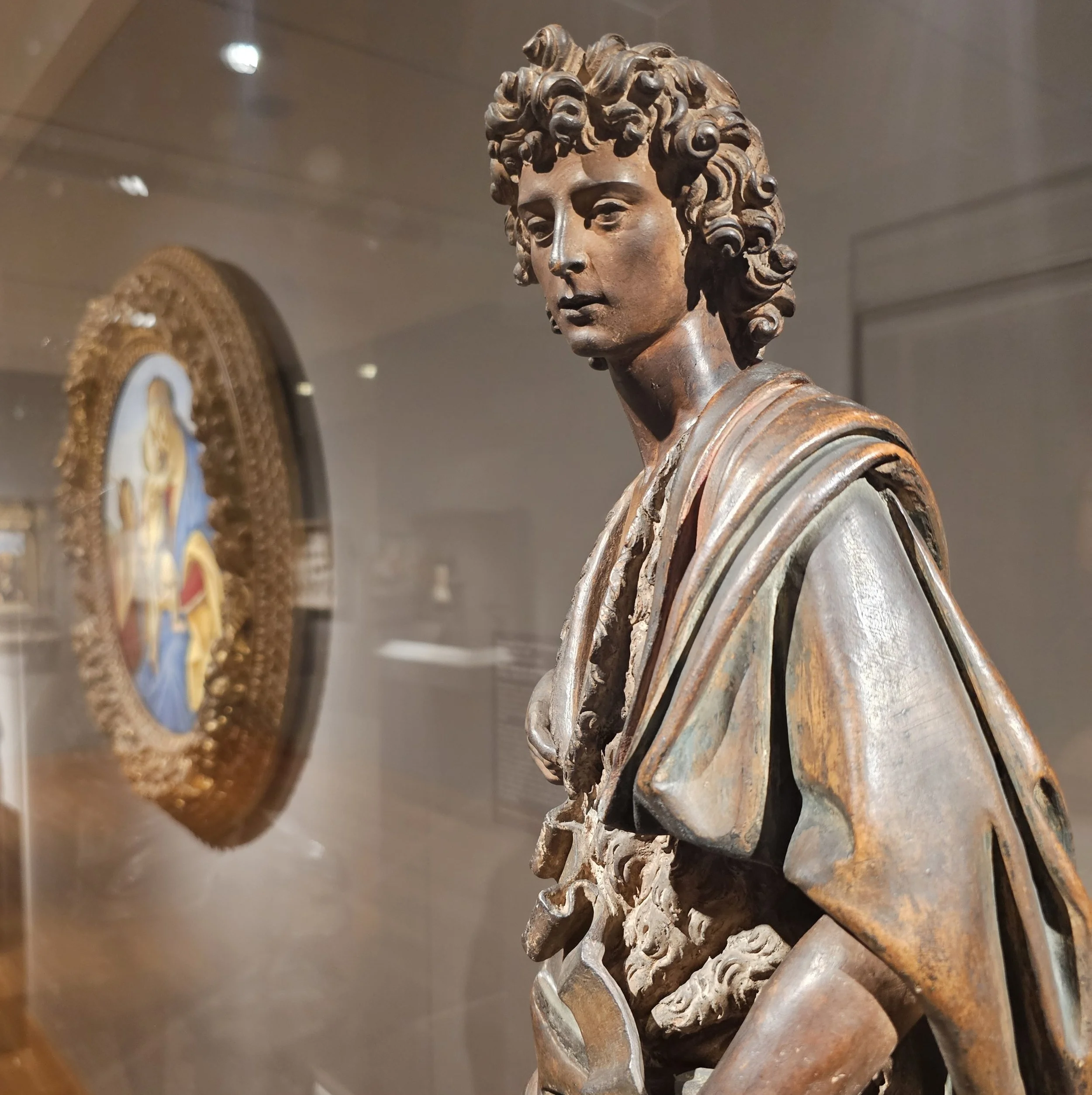St. John at the Cleveland Museum of Art- A Critical Review
I was recently roaming through the catacomb architecture of the Cleveland Museum of Art’s ecclesiastical collection wide eyed with wonder at the early history of flesh painting and esoteric symbolism. Soon, I began counting the numerous interpretations of my favorite John. There’s a lot of them here, and sadly I’ve only so much space on this platform to post a few of my favorites. St. John’s day, otherwise known as the nativity of St. John the Baptist, is traditionally celebrated around the summer solstice in a wide variety of ways. It just passed this June 24th.
In Estonia, it’s known as Jaanipaev, and involves heavy feasting and bonfires. In Puerto Rico people walk backwards into the sea at midnight to symbolize renewal.
Ever the iconoclast, the wild man in a hair suit hanging by the Jordan, chowing on suppers of locusts and wild honey, St. John the Baptist was famous for heralding the coming of the lord and first cousin of the more famous bible character, Jesus. Featured prominently in the original Greek gospels, it is of popular opinion among both religious scholars and true believers that St. John is one of the possible reasons the bible has become the best-selling book of all time. St. John’s day not only marks the beginning of Summer each year, but also reminds us of the astronomical symbolism of these fascinating characters from western antiquity. Celebrated here through the untamed imagination of Juan de Flandes to the renown idealized sculptural genius of Botticelli, and the colorful pictorial foreshadowing of the Dutch, Petrus Christus, if you like to ponder variations on mystical themes, why and what it all means, this Museum is dream come true.
St. John at the Cleveland Museum of Art- A Critical Review ***** 5 Stars









